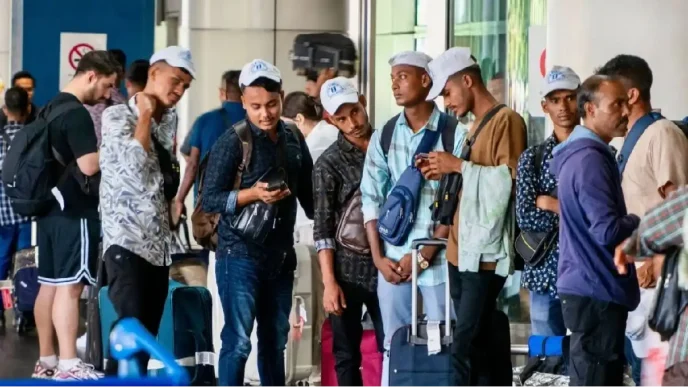In Malaysia, a disturbing surge in child sexual abuse cases has emerged as a pressing societal crisis, with police statistics revealing a sharp increase in incidents since 2022. From harrowing personal accounts of near-assaults to systemic challenges in safeguarding vulnerable minors, the numbers paint a grim picture: over 11,000 cases reported between 2022 and April 2025, disproportionately affecting girls and, most alarmingly, children under six. As predators increasingly exploit digital platforms to target the young, authorities and advocates are racing to strengthen protections, while families grapple with the devastating aftermath of abuse.
A Growing Epidemic of Abuse
According to data from the Bukit Aman Criminal Investigations Department’s sexual, women, and child investigation division (D11), a total of 11,479 cases of sexual abuse involving underage victims were recorded between 2022 and April 2025. The figures show a steady climb, from 2,859 cases in 2022 to 3,892 in 2023, with 1,289 cases reported in just the first four months of 2025. Rape, constituting 43% of these crimes, has also risen, with 1,277 cases in 2022 escalating to 1,689 in 2024, and 473 already logged by April 2025.
Of the victims, 10,896 were girls compared to 1,084 boys, highlighting a stark gender disparity. Even more horrifying, 421 cases involved children under the age of six, while about half of all victims—6,051—were aged between 13 and 15. These statistics underscore the vulnerability of adolescents, particularly as online platforms become hunting grounds for predators.
Personal Stories of Trauma and Escape
Behind these numbers are stories of profound trauma. In Petaling Jaya, a 15-year-old girl, referred to as Anna (not her real name), narrowly escaped a sexual assault after being lured by a man she met on social media. Known only as “Kay,” the man presented himself as a well-traveled individual with an enviable lifestyle, only for Anna to discover his deception when she met him in person. “He never revealed his name nor used his real photo. He even used a prepaid number registered under someone else’s name to contact her,” said Anna’s mother, Lisa (not her real name), in an interview with a local outlet. Lisa recounted how the man drove Anna two kilometers away from their meeting point and attempted to force himself on her before she managed to escape and run home.
Lisa’s fears extend beyond her daughter. She revealed that “Kay” had befriended multiple teenage girls from Anna’s school on social media, using fake details that made him untraceable after deleting his account. “I don’t understand why a man in his 30s would want to befriend teenage girls. I am also concerned if any of the other girls had fallen victim,” she added, voicing a concern shared by many parents in an era of unchecked digital interactions.
In a separate incident, a woman named Aishah, aged 39, discovered that a 40-year-old relative had been sexually abusing her 13-year-old niece for five years. “It broke my heart to find out that my niece, who was like my own daughter, had to go through this,” Aishah shared. The abuse came to light after the girl confided in a friend, whose mother alerted the family. Noticing behavioral changes—distress and a loss of enthusiasm for life—Aishah and her family took steps to protect the child. Her warning to other parents is chilling: “It is not necessary that the predators are someone unknown to us, sometimes they are closer than we think.”
Online Predators and the Digital Threat
The rise in child sexual abuse is increasingly linked to the digital realm, where predators exploit unsupervised access to smartphones and social media. Senior Assistant Commissioner Siti Kamsiah Hassan, principal assistant director at Bukit Aman’s D11 division, recently highlighted this trend in an interview with a Malaysian publication. “More children today are exploring online content earlier than ever before, often without guidance or monitoring. Such early exposure, especially for children under 15, who have no digital literacy or protective boundaries, makes them highly vulnerable to grooming and exploitation by online predators,” she explained.
Siti Kamsiah described a common tactic used by predators: establishing an innocent-seeming friendship by pretending to share common interests, then steering conversations toward sexual content. Once trust is gained, the relationship often escalates to physical or non-physical exploitation. In non-physical cases, predators may offer explicit content or child sexual abuse material (CSAM) for a fee, coercing victims to send nude videos if they cannot pay, and later using the material for extortion. “Predators would often extort cash from them and threaten to share the video and images publicly,” she noted.
Even more concerning is the involvement of individuals with social influence, such as content creators and influencers, who exploit their followers. “Some of these individuals may post sexually suggestive content or initiate private and inappropriate communication with minors by exploiting the children’s admiration for them,” Siti Kamsiah warned. Recent cases underscore her point: a social media influencer was investigated for sending lewd messages to a 14-year-old, while another reported a Facebook group allegedly promoting sexual content involving children’s images. Deputy Communications Minister Teo Nie Ching confirmed that the Malaysian Communications and Multimedia Commission (MCMC) has engaged with Meta, Facebook’s parent company, to address the issue.
Systemic Challenges and Calls for Vigilance
With around 70% of sexual abuse cases in Malaysia involving child victims, authorities face significant hurdles in identifying and prosecuting offenders, particularly those with a long-term orientation toward CSAM. Siti Kamsiah emphasized the difficulty in officially pinpointing pedophilic suspects without medical confirmation, but stressed the need for proactive measures. She urged parents to act as “gatekeepers” to their children’s digital worlds, advocating for supervised internet access, clear boundaries, and the instillation of moral values from a young age. “If they do not actively supervise them, the children may be left vulnerable in dangerous spaces,” she cautioned.
Schools, as a “second family” to children, also bear responsibility. Teachers must be vigilant for signs of distress or behavioral changes that could indicate abuse, while recognizing that perpetrators may hide within trusted roles. “Teachers can easily win the trust of children who may see them as role models,” Siti Kamsiah pointed out, calling for safe environments where children feel protected.
Policy Responses and the Push for Transparency
In response to the crisis, the Women, Family and Community Development Ministry has developed initiatives to bolster child safety. The Child Sexual Offenders Registration System (e-DKK), managed by the Social Welfare Department (JKM) since its enforcement in April 2019, currently lists over 500 pedophiles, a number that has grown from 59 in 2019 to 545 by May 2025. The upcoming Children Service System (ANAK) will integrate e-DKK, allowing parents and child-related sectors to conduct online background checks on potential hires—ranging from teachers and childcare workers to bus drivers and security guards—ensuring they have no criminal record against children.
While access to the registry is currently controlled to protect data under the Official Secrets Act 1972, demand for information has surged. The ministry warns that misuse or leaks could lead to legal action, balancing safety with privacy concerns. However, criminologist Datuk Dr. P. Sundramoorthy, a former associate professor at Universiti Sains Malaysia, argues for a public registry as a critical safety mechanism. “The public has a right to know if a convicted sexual offender is living or working nearby, particularly when children are involved,” he stated in a recent discussion with a local outlet. “We owe it to our children to ensure that pedophiles do not commit the crime again.”
Sundramoorthy acknowledges concerns about vigilantism or hindering offender rehabilitation but suggests that clear guidelines and tiered disclosure systems could address these issues. “It’s about prioritizing prevention, transparency, and safety because the trauma left by sexual crimes, especially on children, is profound and often lasts a lifetime,” he emphasized.
Looking Ahead: A Call for Collective Action
As Malaysia grapples with this escalating crisis, the intersection of digital vulnerability and societal trust poses complex challenges. The stories of Anna and Aishah’s niece are stark reminders of the personal toll, while police data and expert warnings signal a systemic issue demanding urgent attention. With initiatives like the e-DKK offering hope for prevention, the question remains whether transparency and vigilance can outpace the evolving tactics of predators. For now, the safety of Malaysia’s children hinges on the collective efforts of families, schools, and policymakers to build a stronger shield—both online and offline.
















